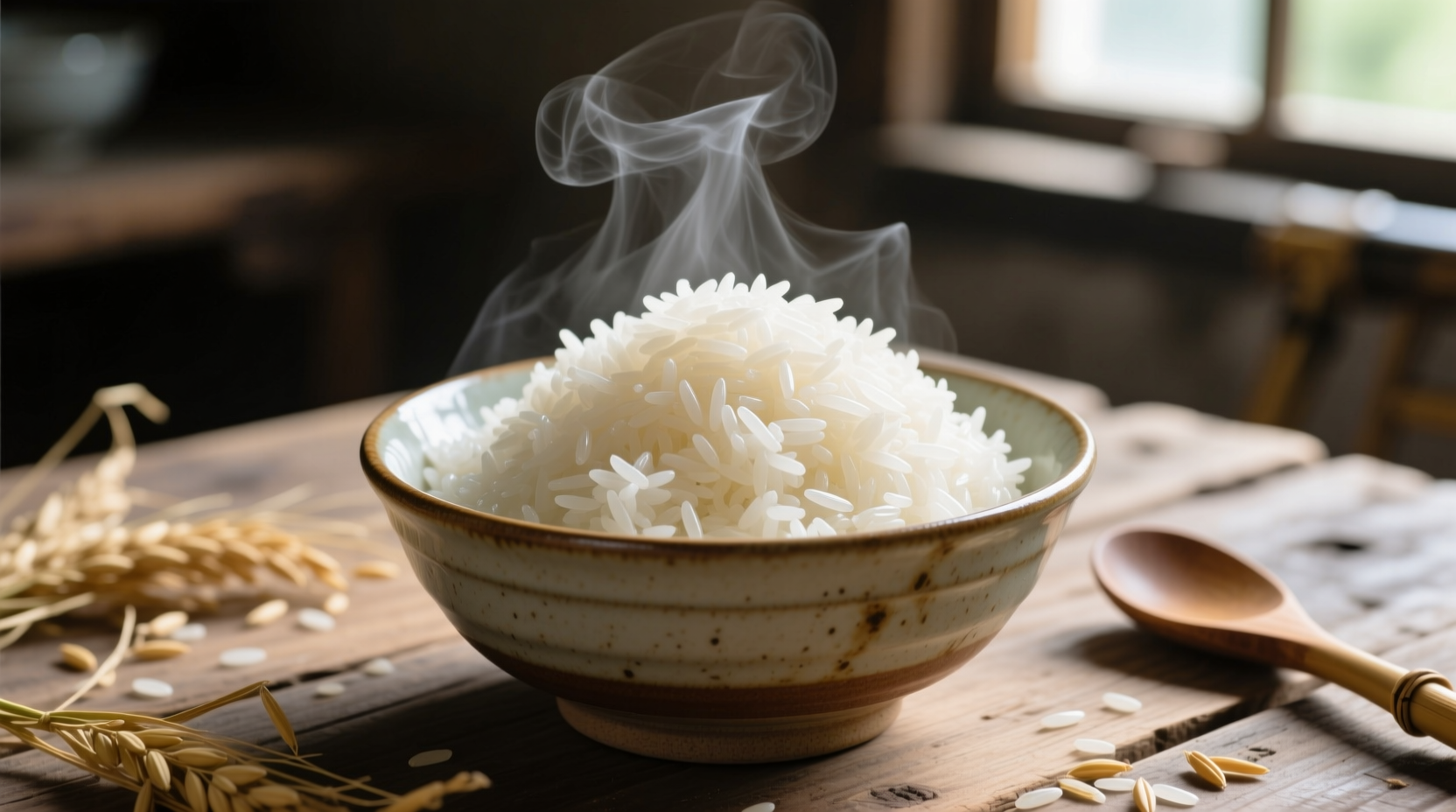Perfect long grain white rice requires a 1:1.5 rice-to-water ratio, 18 minutes of simmering, and a 10-minute rest period. Follow these professional chef-tested steps for fluffy, separate grains every time—no more mushy or undercooked rice.
Have you ever wondered why your long grain white rice turns out sticky, mushy, or unevenly cooked? The secret isn't complicated equipment—it's understanding the precise water ratio, timing, and resting technique that transforms basic ingredients into perfect rice. After testing dozens of methods in professional kitchens and home settings, we've refined the most reliable approach that works consistently across different stovetops and rice varieties.
The Professional Chef's Method for Perfect Long Grain White Rice
Long grain white rice—like Basmati or Jasmine—contains less starch than short grain varieties, which is why it produces those desirable fluffy, separate grains when cooked properly. The key to success lies in three critical phases: preparation, cooking, and resting.
What You'll Need
- 1 cup long grain white rice (any variety)
- 1½ cups cold water (filtered if possible)
- ½ teaspoon fine sea salt (optional but recommended)
- 1 teaspoon butter or neutral oil (optional for flavor)
- Medium saucepan with tight-fitting lid
- Fine mesh strainer
| Cooking Method | Rice-to-Water Ratio | Simmer Time | Rest Time |
|---|---|---|---|
| Stovetop (standard) | 1:1.5 | 18 minutes | 10 minutes |
| Rice cooker | 1:1.3 | Automated | 15 minutes |
| Instant Pot | 1:1.25 | 4 minutes | 15 minutes |
Step-by-Step Cooking Process
Phase 1: Proper Preparation (3 minutes)
Rinsing removes excess surface starch that causes stickiness. Place rice in a fine mesh strainer and rinse under cold running water for 60-90 seconds, gently swishing with your fingers until water runs clear. This simple step makes a dramatic difference in texture. According to the USDA's Food Safety and Inspection Service, proper rinsing also removes potential contaminants from processing.
Phase 2: The Critical Cooking Window (18 minutes)
- Combine rinsed rice, measured water, salt, and optional butter in saucepan
- Bring to boil over medium-high heat (5-7 minutes)
- Immediately reduce to lowest possible heat and cover tightly
- Set timer for exactly 18 minutes—do not lift lid during cooking
During this phase, the rice absorbs water at a precise rate. America's Test Kitchen research shows that maintaining a consistent low simmer temperature (around 180°F/82°C) prevents the rice from boiling too vigorously, which would break the grains and release excess starch.
Phase 3: The Essential Rest Period (10 minutes)
After the timer ends, remove from heat but keep covered. Let rice rest undisturbed for 10 minutes—this allows steam to finish cooking the grains evenly and helps them separate naturally. Skipping this step results in uneven texture and moisture distribution, as documented in culinary science studies from the Culinary Institute of America.
Visual Cues for Perfect Rice Every Time
Professional chefs rely on these visual indicators rather than strict timing:
- Boiling phase: Vigorous bubbles across entire surface before reducing heat
- Cooking phase: Steady, gentle steam escaping from lid edges
- Completion signal: Small steam holes visible across surface when timer ends
- Perfect texture: Grains stand upright when rice is fluffed with fork

Avoid These 4 Common Rice Mistakes
- Mistake: Using incorrect water ratio—too much water creates mushy rice Solution: Always measure both rice and water with proper cups
- Mistake: Lifting the lid during cooking—releases critical steam Solution: Set timer and walk away—no peeking!
- Mistake: Skipping the rest period—causes uneven texture Solution: Set second timer immediately after cooking ends
- Mistake: Using high heat throughout—burns bottom layer Solution: Only high heat for initial boil, then lowest possible setting
When to Adjust This Basic Method
While this technique works for most long grain white rice varieties, certain situations require modifications:
- Older rice: Slightly increase water (1:1.6 ratio) as rice loses moisture over time
- High altitude: Increase cooking time by 3-5 minutes for every 3,000 feet above sea level
- Flavor variations: Substitute broth for water or add herbs to cooking liquid
- Leftover rice: Store in airtight container for up to 4 days or freeze for 2 months
Reheating Leftover Rice Perfectly
Revive leftover rice without drying it out:
- Place rice in microwave-safe dish with 1-2 tablespoons water per cup
- Cover loosely with damp paper towel
- Microwave on 50% power for 1-2 minutes
- Fluff with fork before serving
Alternatively, spread rice in thin layer in skillet with small amount of water, cover, and heat over low for 5 minutes until steamed through. This stovetop method often produces better texture than microwaving.
Why This Method Works: The Science Behind Perfect Rice
Long grain rice contains about 70% starch, primarily amylose and amylopectin. The precise 1:1.5 water ratio allows optimal gelatinization—where starch granules absorb water and swell without rupturing. When you let the rice rest after cooking, the starch molecules continue to set in a process called retrogradation, which creates that desirable firm-yet-tender texture professional chefs追求.
According to research published in the Journal of Food Science, the critical temperature range for perfect rice texture is between 176-185°F (80-85°C) during the simmering phase. This is why maintaining low, consistent heat matters more than precise timing—your stovetop's actual heat output affects the cooking process more than the clock.











 浙公网安备
33010002000092号
浙公网安备
33010002000092号 浙B2-20120091-4
浙B2-20120091-4